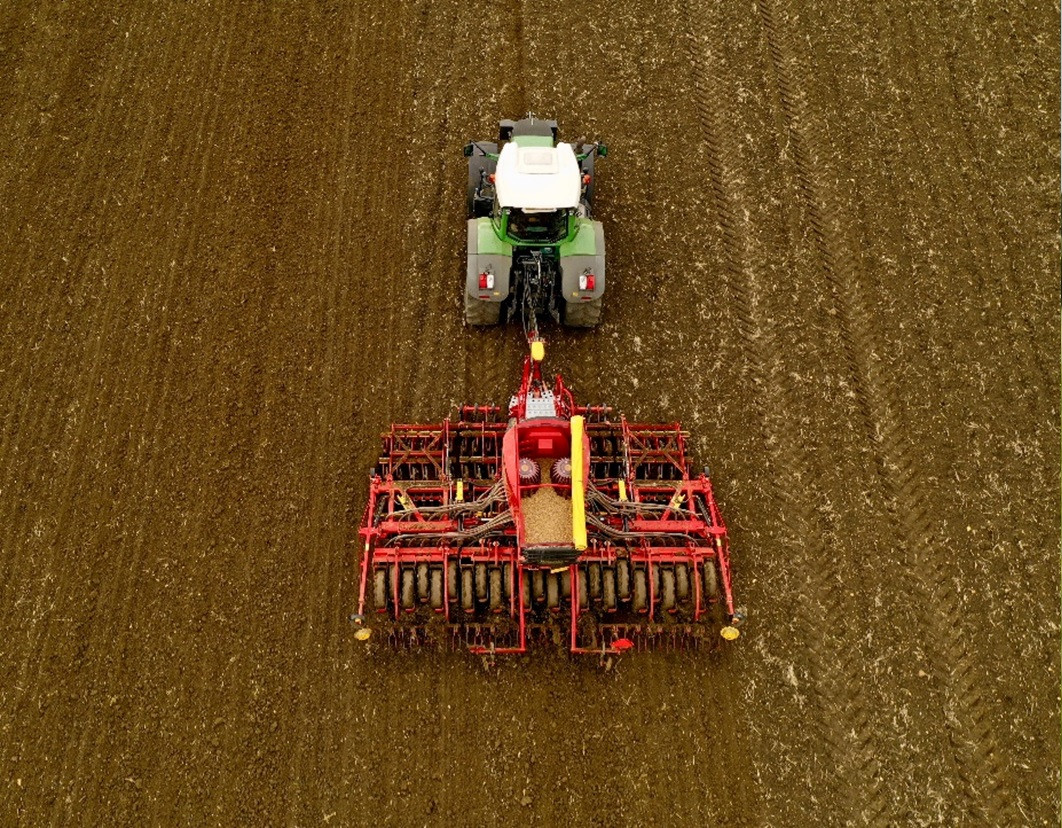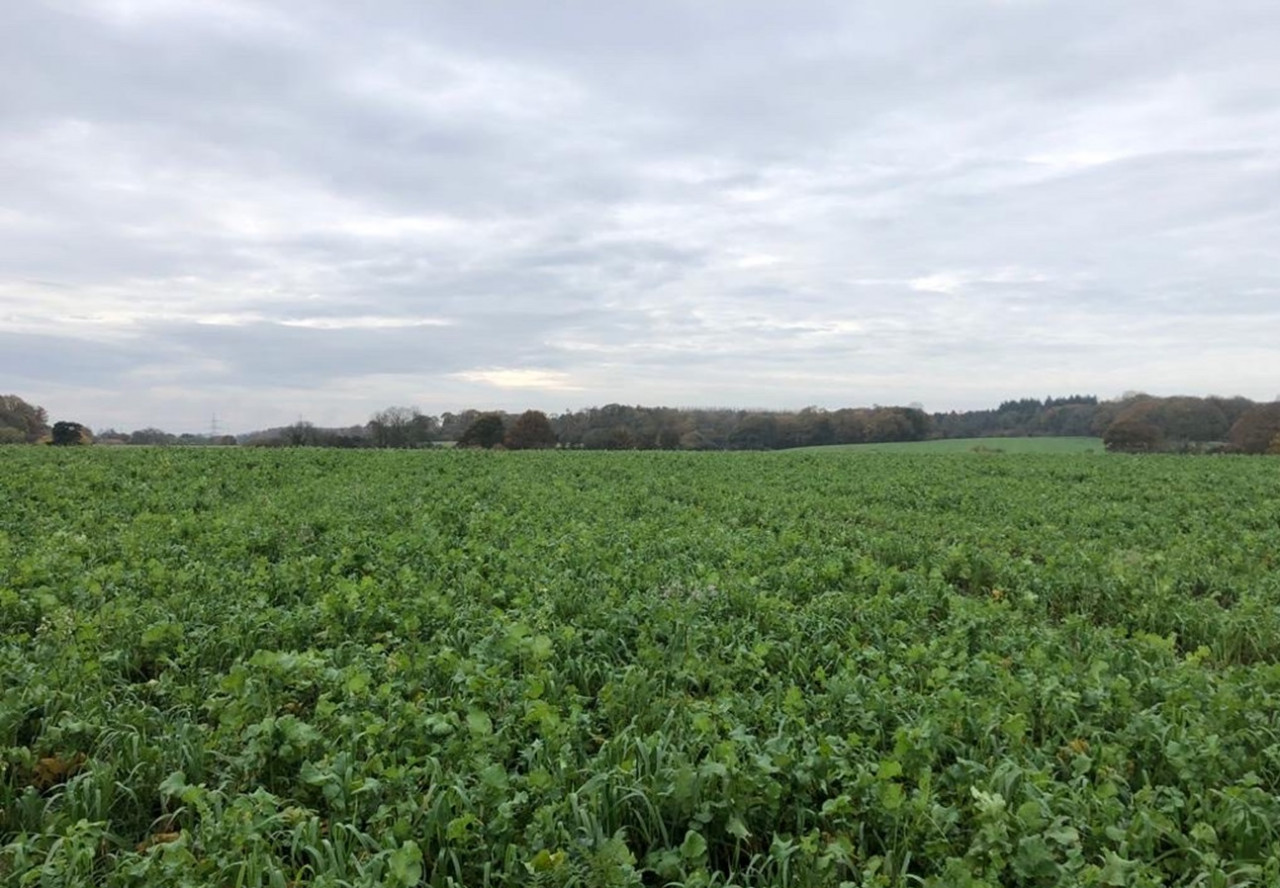Considerations for the establishment of spring crops
Good establishment of spring crops is critical to ensure sufficient plant numbers to optimise crop yield. Getting crops off to the best start also provides those well-known cultural grassweed control benefits. Spring may seem a long way off, however, some growers opt to start drilling spring wheat and barley in late autumn or early winter. Doing this provides yield benefits, reduces spring workloads and avoids the difficulty of establishing crops in dry spring seedbeds.
Timing and rates
Typical seed rates for spring wheat and spring barley are 300-350 seeds/m2, both with a target of 250-300 plants/m2. Spring oats of 250-300 seeds/m2 have a target of 200-250 plants/m2. Higher rates are for very early/late drilling or in compromised seedbed conditions.
For growers sowing either spring wheat or barley in the autumn, it's important to remember that any crop planted before the end of January in the year of harvest is considered a winter crop, despite the crop being a spring variety. This will open up opportunities for more herbicide options like those used in winter cereals, which can be beneficial on fields that have known grassweed issues. However, it is not recommended to sow spring crops in the autumn on land with high grassweed burdens. Additionally, applications of herbicides to spring varieties sown in the autumn are likely to be at the growers' own commercial risk.
Grassweeds
Over the years, many trials have illustrated the benefits of leaving weedy fields until the spring. This will allow for a long period of germination for grassweeds, which can be killed using glyphosate. Delaying the drilling of spring cereals will see a natural decline in the number of black-grass plants which will emerge. Those which surface will be smaller and therefore produce fewer viable seeds. Importantly though, the same effects are not always seen with ryegrass due to its protracted germination.
If black-grass or ryegrass pressures are high on land destined for a spring crop, the application of a pre-emergence herbicide should be considered. However, many of these options are under Extension of Authorisation for Minor Use (EAMU) regulations and therefore are applied at your own risk.
0.3l/ha Liberator (flufenacet + diflufenican) can be used on spring wheat and spring barley. 2l/ha Crystal (flufenacet + pendimethalin) can be used on spring barley (EAMU). Liberator and Crystal are useful products in spring cereals, but the 120g/ha of flufenacet applied at these rates is not enough to deliver high levels of grassweed activity alone. Stomp Aqua (pendimethalin) can be used in spring barley and spring wheat (EAMU) to provide broad-leaved weed activity. Luxinum Plus (cinmethylin) will have authorisation for use in spring barley in spring 2023, so this will present a new grassweed herbicide mode of action for this crop. Avadex Excel is also a good option in spring wheat and spring barley as it gives very high levels of wild oat control and adds to black-grass and broad-leaved weed activity.
Spring oats have very limited herbicide options. The application is a careful balance of residual herbicides to spring crops, as sometimes the effect of a large herbicide stack can affect the vigour of the crop and therefore have an impact on its ability to outcompete the weeds. Be conservative with herbicides in spring cereals and maximise all cultural controls.
Cover crops
If eradicating cover crops prior to drilling a spring crop, working back from your target drill date by a minimum of six weeks will ensure that the active has adequate time to break down the crop canopy along with any weeds. This will then help to create the best conditions to drill the following crop into. If your cover crop has a large canopy, weeds underneath the upper canopy may not be reached by glyphosate during desiccation. It's a good idea to monitor the efficacy of cover crop destruction and follow up with another application at a suitable rate closer to the drill date if needed.
Grazing a cover crop is a great way of using the vegetation and further enhancing the economics of growing spring crops. If cover crops have been grazed off by livestock, assess the soil profile for signs of poaching and use remedial cultivations where necessary. After desiccation of the cover crop or stale seedbed, try to avoid as much soil disturbance as possible to reduce the germination of more grassweed seeds.
Nutrition
Earlier drilled crops will have better established root systems and therefore are likely to perform better in dry spring conditions due to greater access to moisture and nutrition. The use of phosphite seed treatments, such as Prosper ST and foliar phosphites, can be used to enhance the development of root systems and when used in combination with micronutrient products they can be an efficient way to maintain plant health.
Spring crops can be especially susceptible to micronutrient deficiency, as barley responds to foliar applications of manganese, copper and zinc, especially on light land and on high pH soils. These deficiencies should be corrected by using high quality nutrient products as early in the season as possible. Manganese seed treatments, such as Mn-Tain, are especially beneficial on light land that's prone to manganese deficiency. Rolling will also help reduce manganese deficiency.
Wheat and barley drilled in the spring should receive 50-75% of total nitrogen pre-emergence of the crop (or post-emergence when the tramlines become visible). If this application is delayed, it can lead to excess grain nitrogen in malting barley and can impact crop establishment. In late drilled crops all nitrogen can be applied in the seedbed.
Pests and disease
Slugs can be an issue in the spring, so don't be fooled by dry conditions. If slugs become problematic, a high-quality ferric phosphate slug pellet can be applied with an aim of >40 pellets/m2. However, the crop should quickly grow away from the danger of slug damage. Barley yellow dwarf virus (BYDV) is a risk in spring cereals, albeit at lower levels than winter cereals. Crops must be monitored and an application of an insecticide can be considered, but again rapid establishment of the crop will also be effective at protecting against BYDV.
Summary
If you have any questions or would like more advice on how to establish spring crops, please speak to your local Frontier contact or get in touch.
Ben Frost
Northern Combinable Crop Production Specialist
As a subscriber, you’ll receive email alerts each time a new blog is published so you can always stay updated with the latest advice and insights from our experts






Comments